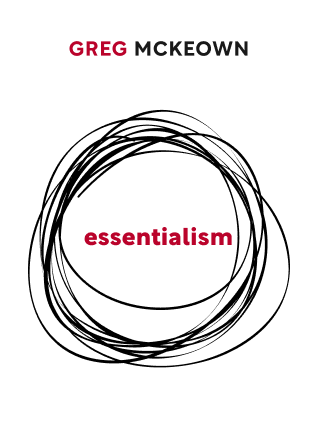

This article is an excerpt from the Shortform book guide to "Essentialism" by Greg McKeown. Shortform has the world's best summaries and analyses of books you should be reading.
Like this article? Sign up for a free trial here .
Do you have a problem saying no to people? Is there an unawkward way of saying no to others without compromising the relationship?
Saying no makes us uncomfortable because it’s socially awkward. But you can say no gracefully, and even get people to respect you for it.
Read about the importance of saying no and how to do it gracefully.
The Art of Saying No Gracefully
Most people are reluctant to say no to others. We’re afraid of creating conflict, disappointing someone, angering our boss, or missing an opportunity.
But saying no when it’s aligned with a clear purpose or intent is powerful. For example, when a bus driver demanded that civil rights activist Rosa Parks give up her seat on a segregated bus, she said no. Over the course of attending civil rights meetings, she’d developed a clear purpose: she wouldn’t suffer that kind of humiliation again. That purpose drove her to act.
Of course, you won’t necessarily change history when you say no, but you can make a difference by standing your ground. In fact, by saying no to something nonessential, you’re often saying yes to something far more important.
When self-help author Stephen R. Covey bumped into an old friend after making a presentation in San Francisco, the friend invited Covey and his 12-year-old daughter, who was traveling with him, to dinner. Covey graciously declined because he’d planned activities with his daughter for the rest of the evening. That “no” — with which Covey opted for the essential over the nonessential — gave his daughter the memory of a lifetime.
Saying no in the moment, as Covey did, can be difficult if you’re unclear about what’s essential. Clarity gives you the strength and the rationale to reject what’s unimportant. Covey was certain of his intent to spend the evening with his daughter, while Rosa Parks’ moral clarity gave her strength to remain in her seat on the segregated bus.
Fear of Awkwardness
Saying no makes us uncomfortable because it’s socially awkward. We prefer to get along with others — conformity and cooperation are traits that helped humans survive in the early days, and they’re still ingrained.
There seem to be only two options: say no and endure the immediate awkwardness or say yes and regret it much longer. However, you can learn to say no gracefully, and even get people to respect you for it in the process.
Tips for Saying No
- Remember, you’re rejecting the decision, not the person. Rejecting someone’s request isn’t the same as rejecting them. Separate the two in your mind. Then communicate your decision clearly but also kindly. You may want to reject the request without using the word no. For instance, you might say, “I would love to do it, but I’m overcommitted right now.”
- Remember the trade-off. Remembering what you’d give up to say yes makes it easier to say no.
- Think of it as a transaction. In a sense, the other person is selling something — for instance, a cause, an opportunity, or social interaction — in exchange for your time. Considering what’s being sold may help you think more objectively about whether to buy it.
- Accept that you might be temporarily unpopular. When you say no, the other person may be disappointed or angry. However, the anger usually doesn’t last. In the longer term, the other person may respect you more for demonstrating that your time is valuable, which is more important than popularity.
- Don’t leave them hanging. Most people would rather have a definitive no than a noncommittal response, such as, “I’ll try to be there,” when you know you won’t. Being frank is more respectful. Besides, delaying a no makes it more difficult for both of you.
Creative Variations
Since essentialists say no a lot, it helps to have a repertoire of ways to do it. Here are a few to start with:
1) Employ the pregnant pause: When someone makes a request, pause and wait for them to fill the silence, or just wait a few beats before saying no.
2) Use a gentle rejection: Say “No, but…” For instance, “I’d love to but I have other plans; let’s try it next month.”
3) Buy some time: Saying something like, “I’ll check my calendar and get back to you,” gives you time to think and ultimately reply that you’re unavailable.
4) Use email auto-responses: Many people are accustomed to receiving email auto-responses when others are on vacation or holidays. You can use them more broadly. They’re handy because they don’t offend — you aren’t saying you don’t want to reply, just that you can’t right now. Indicate that you’re tied up with a project and temporarily inaccessible.
5) Make them prioritize: When your boss makes a request on top of previous requests, ask which one you should prioritize. Make clear that something else will have to give way.
6) Use humor if it fits the occasion: For instance, if someone asks you to participate in a game or athletic activity, poke fun at your lack of skill.
7) State what you’re willing to do: If someone asks for something and you want to help but can’t do what they asked, state what you can do instead. For instance, “I’m willing to loan you my car, but I can’t drive you to the airport Tuesday.”
8) Suggest someone else: If you know of someone else who might want to help, convey your regrets while suggesting another name.
Being able to say no effectively is a leadership skill you can learn. Start by learning a few basics and practice until you become an expert.

———End of Preview———
Like what you just read? Read the rest of the world's best book summary and analysis of Greg McKeown's "Essentialism" at Shortform .
Here's what you'll find in our full Essentialism summary :
- How to do less but to do it better
- Why you need to be disciplined in your pursuit of less
- How you can learn to say no






